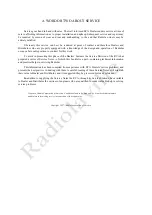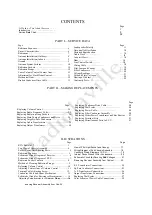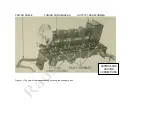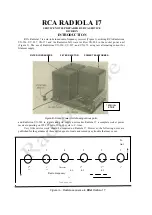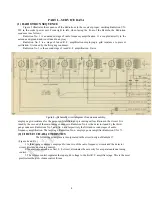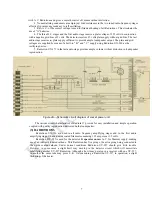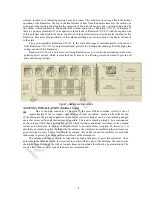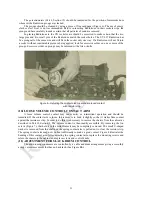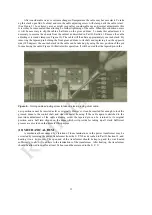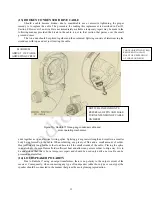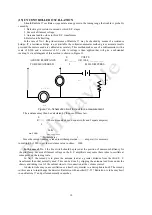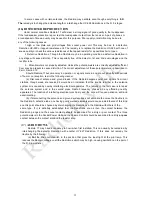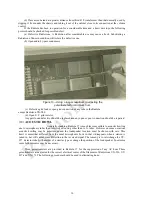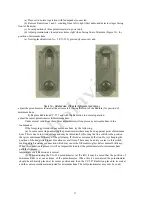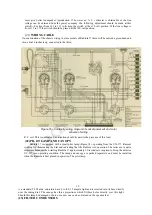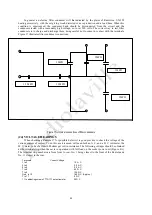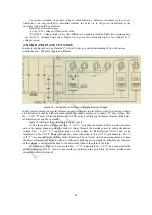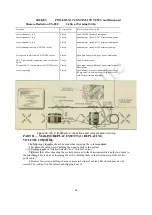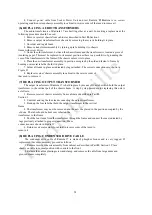
In some cases with certain antennas, the Radiola may oscillate even though everything is
0. K.
The
remedy is to change the antenna length or interchange the UX-226 Radiotrons in the R. F. stages.
(16) DISTORTED REPRODUCTION
Under normal conditions Radiola 17 will deliver a strong signal of good quality to the loudspeaker.
If the loudspeaker production is poor test the loud speaker output from the receiver. A pair of phones or
a loudspeaker of known quality may be used for this purpose. Poor quality or distortion may be due to
any of the following causes:
1 High or low plate and grid voltages from socket power unit This may be due to a defective
Radiotron UX-280 or tapped resistance unit. The remedy is to replace the Radiotron UX-280 with one of
known quality or check the various resistances of the tapped resistor for a possible short or open. _
2 Defective Radiotrons. Though the Radiola may be in operating condition a defective Radiotron in
any stage will cause distortion. This is especially true of the detector, 1st and 2nd audio stages and the
rectifier tube.
3.. Potentiometers not properly adjusted. Unless the potentiometers are correctly adjusted sufficient
hum may be present to cause distortion. The correct adjustment of these potentiometers is described in
Part I, Section 19
Should Radiola 17 become noisy in operation or signals come in and die out abruptly with periods
of hum or no reception, test in the following manner:
(a) Disconnect antenna and ground leads. If the Radiola becomes quiet and signals from local
stations, though weak, are received it would be an indication that the trouble is either in the antenna
system or is caused by nearby interfering electrical apparatus. The remedy in the first case is to repair
the antenna system and in the second place Radio Frequency chokes on any offending nearby
apparatus. The location of interfering electrical machinery and the cure will require patience, skill and
experimenting.
(b) If disconnecting the antenna and ground system does not eliminate the noise the trouble is in
the Radiola. A defective tube, one having poorly welded elements would cause a disturbance of this kind
and this point should be checked by interchanging the Radiotrons in the Radiola with others of the
same type. If it is definitely established that the Radiotrons are ok then the contact between the
Radiotron prongs and the socket contacts should be examined for a dirty or poor contact. The three
potentiometers in the Socket Power Unit and the Volume Control should be examined for a dirty
or poor
contact between the contact arm and the resistor strip.
(17)
AUDIO HOWL
Radiola 17 may have a tendency to howl when first installed. This can usually be remedied by
interchanging the detector Radiotron with another UY-227 Radiotron. If this does not remedy the
trouble try the following:
(a)
Put
the line control switch in the position that gives the least light at the pilot lamp. This
reduces the filament voltage on all the Radiotrons which may be high, causing oscillation on the part of
the R. F. amplifiers.
15


